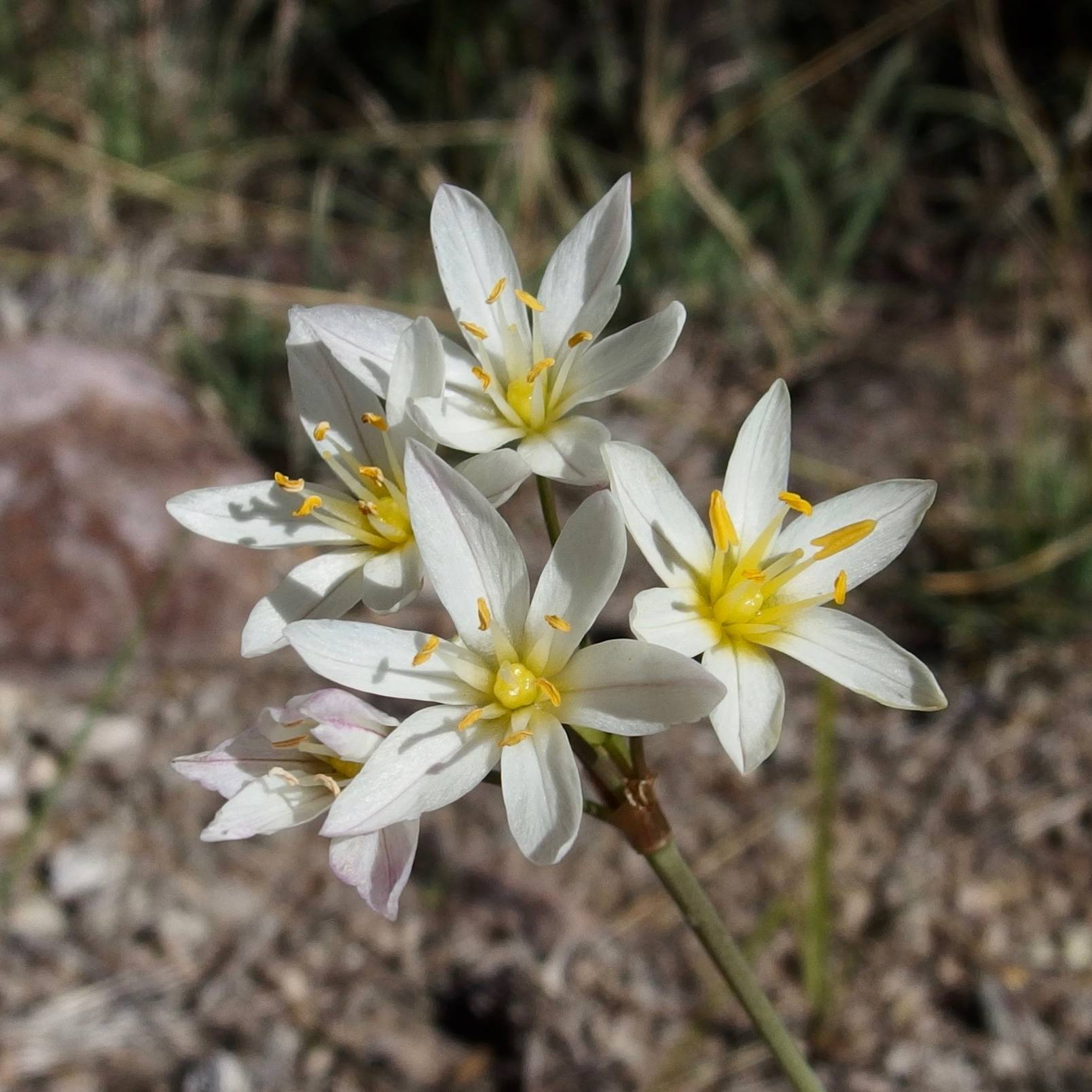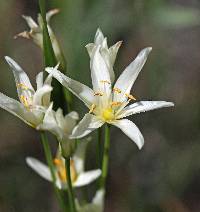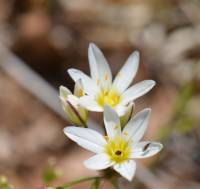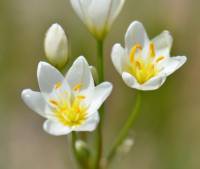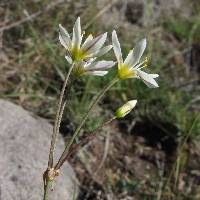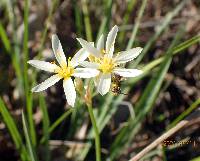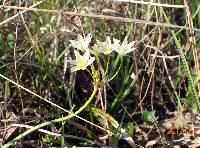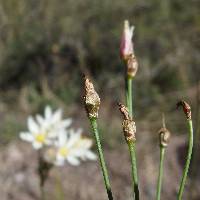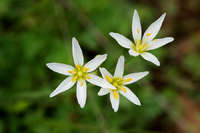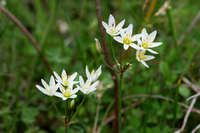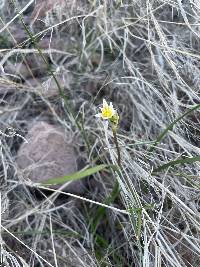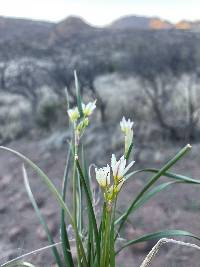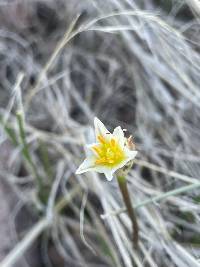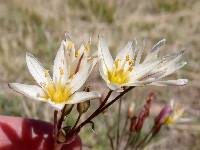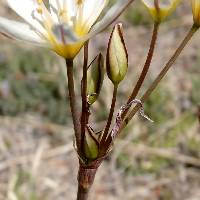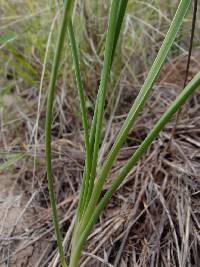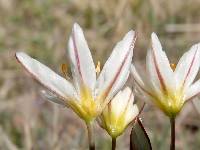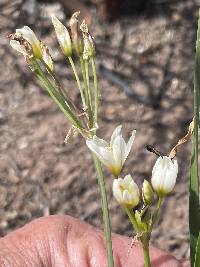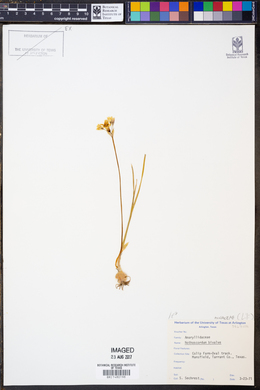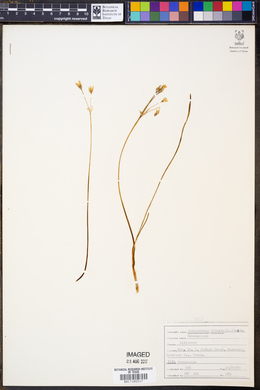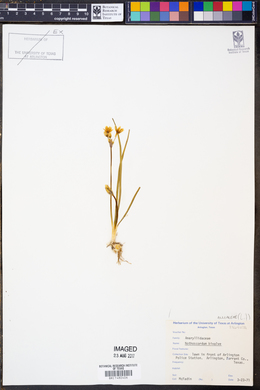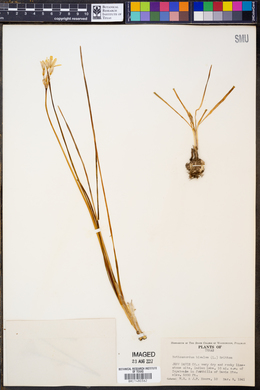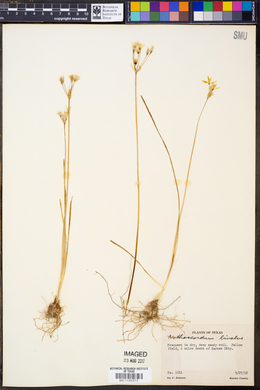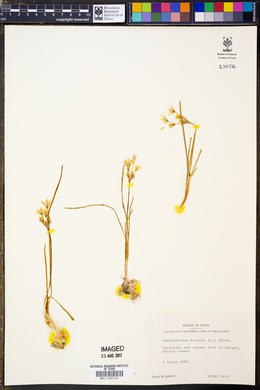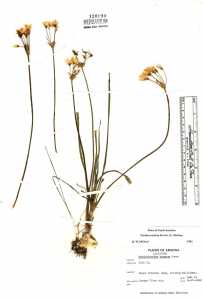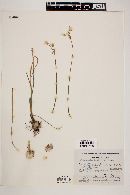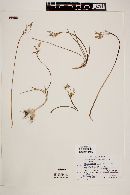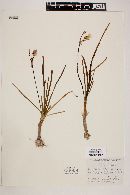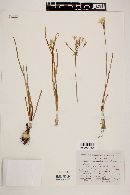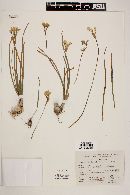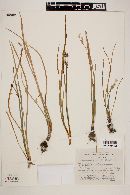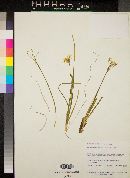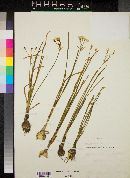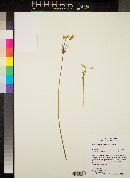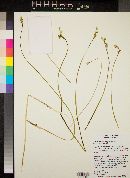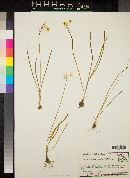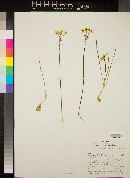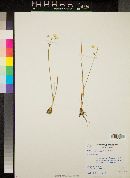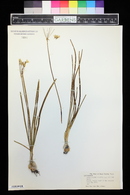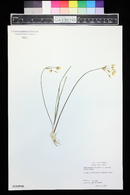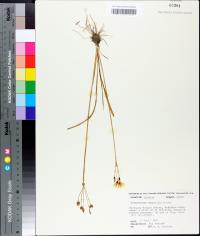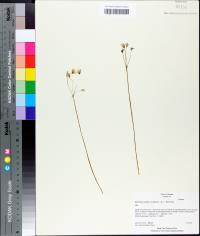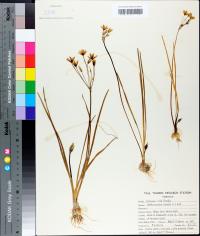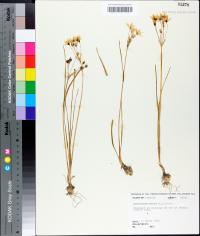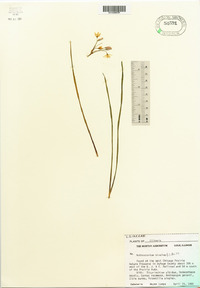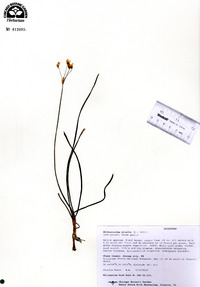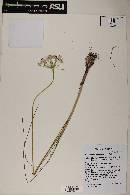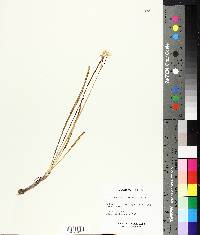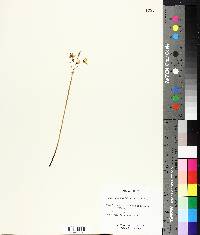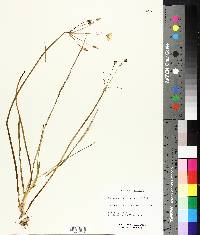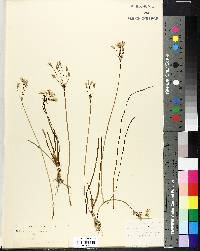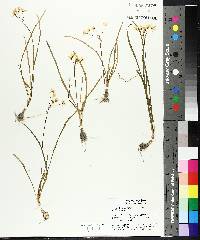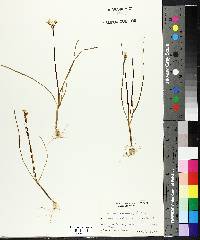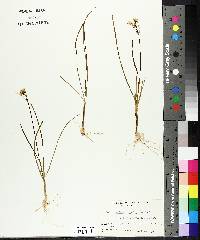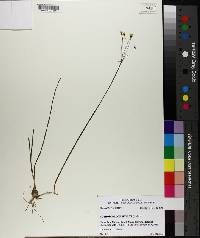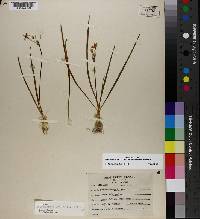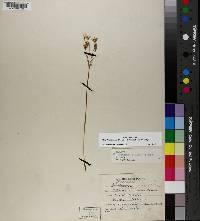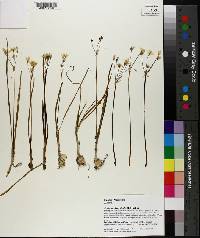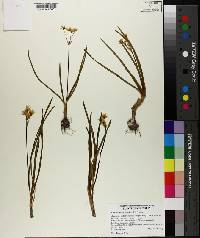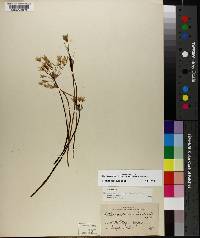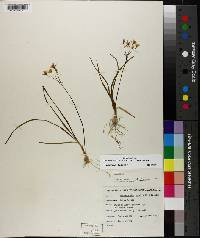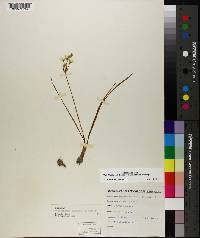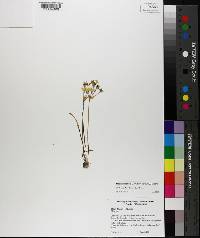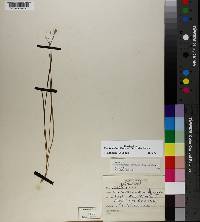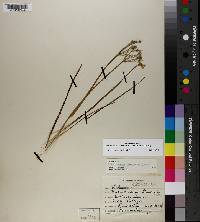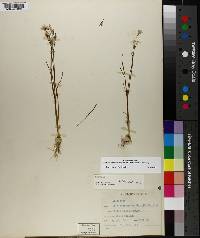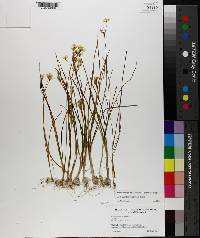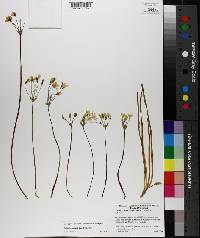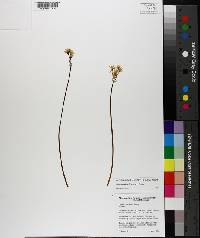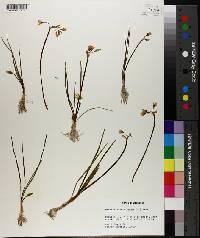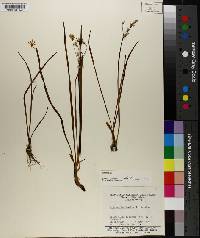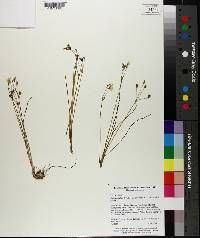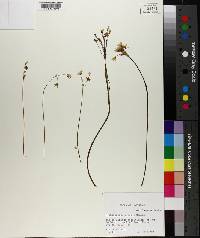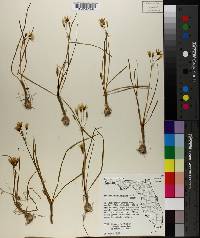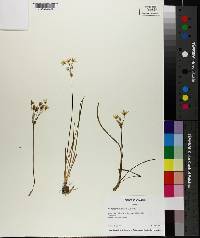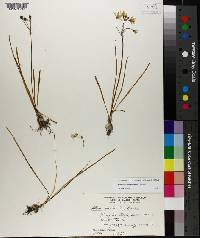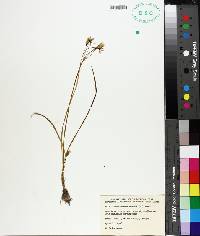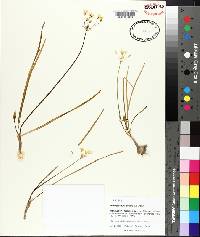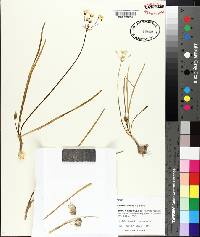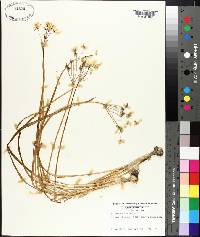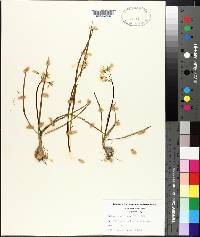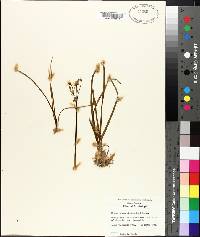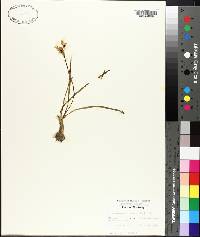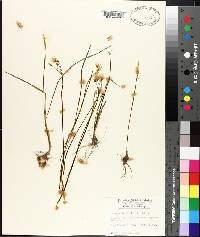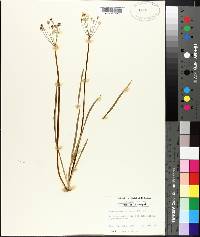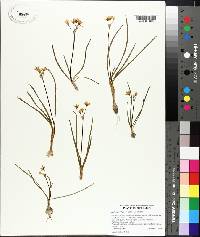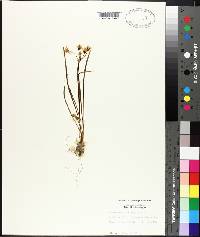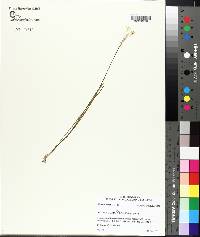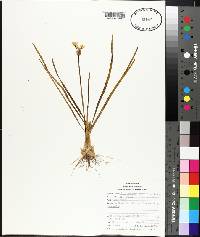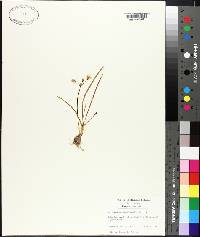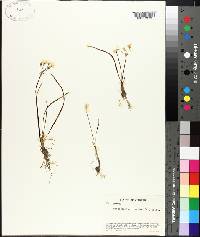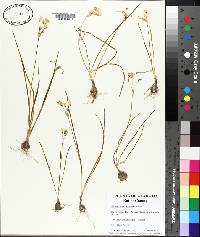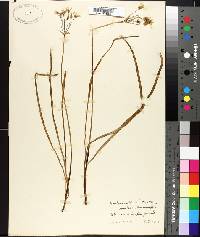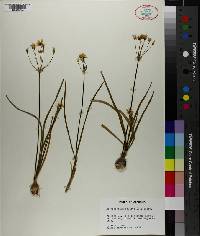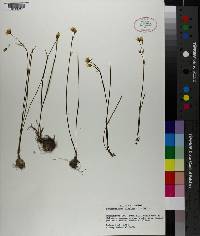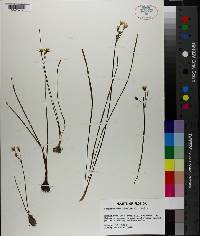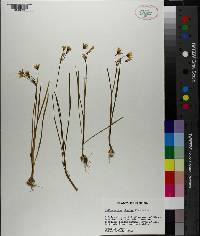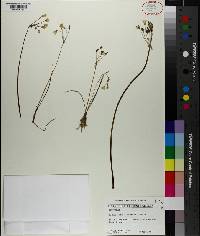
|
|
|
|
Family: Amaryllidaceae
Crowpoison, more...Texas False Garlic
[Allium bivalve (L.) Kuntze, moreAllium striatum , Nothoscordum sellowianum , Nothoscordum striatum Kunth, Nothoscordum texanum M.E. Jones, Ornithogalum bivalve L.] |
Bulbs globose to subglobose, to 1-1.5 cm diam.; outer coats brown; bulblets absent. Scape solitary (rarely 2), terete, (10-)20-40 cm × 1-3 mm. Leaves 1-4, sheaths enveloping neck of bulb, hyaline, subtruncate apically; blade filiform or linear, to 30 cm × 1-4(-5) mm, margins entire. Umbel mostly 3-6(-10)-flowered, often asymmetrical, 1-3 cm diam.; bracts persistent, 2, 1-2 cm × 4-8 mm, base coherent, imbricate, margins scarious or hyaline, apex acuminate. Flowers not fragrant; tepals whitish to cream, at least outer ones with red or purplish red midvein, elliptic, (8-) 10-12(-15) × 3-4.5 mm, apex acute or acuminate; filaments simple, adnate to tepals, 5-6 mm; anthers yellow; ovary crestless; style persistent, equaling stamens; stigma unlobed, 3/4 perianth; pedicel erect, 1-2 cm, elongating as flowers develop, but often of several lengths even in fruit. Capsules subglobose or obovoid, 6-8 × 6-8 mm. Seeds 4-7 per locule. Flowering Mar--Dec. Open woods, prairies, barrens; 0--1700 m; Ala., Ariz., Ark., Fla., Ga., Ill., Ind., Kans., Ky., La., Miss., Mo., N.Mex., N.C., Ohio, Okla., S.C., Tenn., Tex., Va.; s to South America. Perennial herb with a membranous bulb 10 - 40 cm tall Leaves: basal, one to four, sheathing basally, 10 - 30 cm long, 1 - 4 mm wide, thread-like or linear. Inflorescence: a solitary, terminal cluster (umbel) of three to ten flowers raised on an upright stalk and subtended by two membranous bracts. Flowers: on 2 - 5 cm long stalks, white to greenish white. Tepals six, 9 - 13 mm long, 3 - 4.5 mm wide, elliptic, with a pointed tip. Stamens six. Anthers yellow. Not fragrant. Fruit: a three-lobed, membranous capsule, 6 - 8 mm long and wide, almost spherical. Seeds black. Similar species: Similar to plants in the genus Allium but lacking their characteristic odor and flavor. Flowering: April to June Habitat and ecology: Introduced from south of the Chicago Region. Rare in the Chicago Region. The only place it has been found growing is at the West Chicago Prairie in DuPage County, Illinois. It is a rather common plant in the southern half of Illinois, where it is typically found in dry woods and prairies. Occurence in the Chicago region: non-native Etymology: Nothoscordum comes from the Greek words nothos, meaning false, and skordon, meaning garlic, referring to the plant's similarity to those in the genus Allium but lacking their characteristic odor and flavor. Bivalve means "having two valves." Author: The Morton Arboretum Wiggins 1964, FNA 2003 Duration: Perennial Nativity: Native Lifeform: Forb/Herb General: Perennial scapose herb from a globose to subglobose bulb. Appearing similar to Allium spp. but lacking the onion odor. Scape solitary, terete, 20-40 cm tall; bulb 1-1.5 cm with brown membranous coat. Leaves: Narrowly linear, 1-4 mm wide, to 30 cm long, acute to obtuse at apex, equaling scape or shorter; 1-4 leaves per plant; sheaths envelop the neck of the bulb. Flowers: White, arranged in asymmetrical umbels of 3-6 flowers atop the scape; flowers unfragrant, 10-12 mm long; petals of outer flowers white with a red or purplish red midvein, elliptic, the apex acute. Fruits: Capsule subglobose or obovoid, 6-8 mm long and wide, obtusely 3-lobed. Ecology: Found in sandy soil and open sites from 2,500-8,000 ft (762-2438 m), flowers April-May. Distribution: Ranges across the southern US to FL and south into c MEX and into Baja California. Notes: FNA folds the former N. texanum under one single taxonomic entity as done here. Although this species appears as a wild onion, with linear leaves, six-petaled flowers and a bulb, notably there is no onion-like smell. This is the only Nothoscordum native to our region; N. gracile is found as an escaped cultivar in the Los Angeles area. Ethnobotany: Unknown, but said by some to be poisonous. Etymology: Nothoscordum is from Greek nothos for false and scordum for garlic, alluding to the fact that this genus looks like a member of the garlic and onion genus but does not taste or smell like one; bivalve means two sides, and refers to the two bracts that subtend the umbel. Synonyms: Allium bivalve, Ornithogalum bivalve, Nothoscordum texanum Editor: SBuckley 2011. FSCoburn 2015, AHazelton 2015 Bulb ovoid, 2 cm, with membranous coats; lvs few, 1-2 dm נ2-3 mm; scape 1-3 dm; fls 5-12; pedicels 2-5 cm, often unequal; tep white or greenish-white, oblong, 9-13 mm; fr subglobose, 5 mm; seeds black, angularly ellipsoid, 3 mm; 2n=18. Open woods, prairies, and barrens, usually in moist soil; se. Va. to s. O., c. Ill. and Kans., s. to S. Amer. Mar.-Sept. Gleason, Henry A. & Cronquist, Arthur J. 1991. Manual of vascular plants of northeastern United States and adjacent Canada. lxxv + 910 pp. ©The New York Botanical Garden. All rights reserved. Used by permission. From Flora of Indiana (1940) by Charles C. Deam A few colonies of this plant have been found in the southwestern counties but I think it is much more common than our records show. Since it reproduces only by seed it may be more restricted than I think it to be. I found it to be common in alluvial bottoms about 4 miles northwest of Bloomfield, Greene County and also in low ground in the post oak flats south of Half Moon Pond in Posey County. ...... Indiana Coefficient of Conservatism: C = 6 Wetland Indicator Status: FACU Diagnostic Traits: scapose; lacking onion-odor; leaves narrowly linear, mostly 2-4 mm wide; flowers in simple umbels, greenish or yellowish-white; seeds several per locule. |
|
|
|

